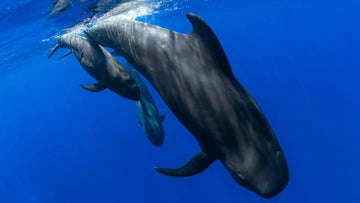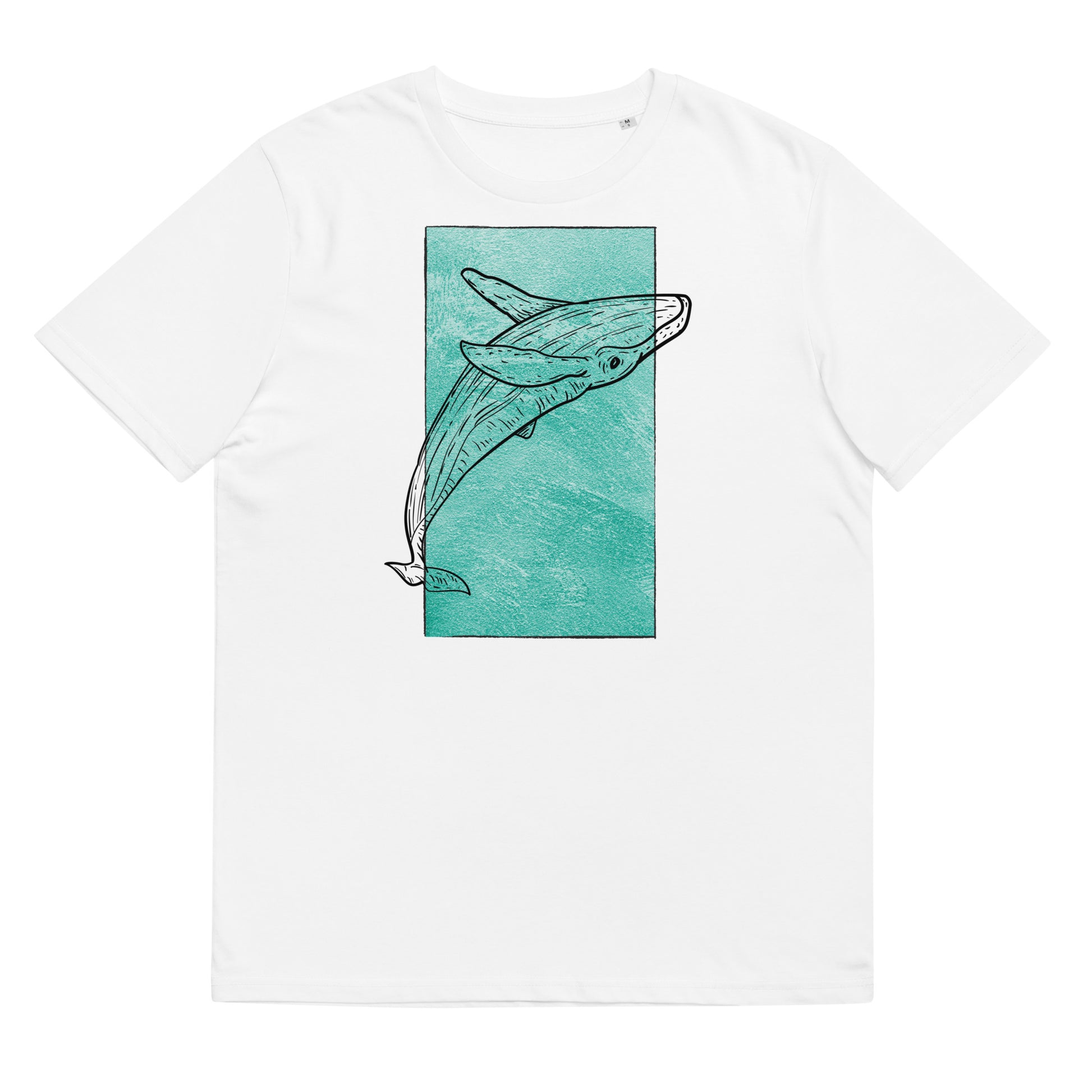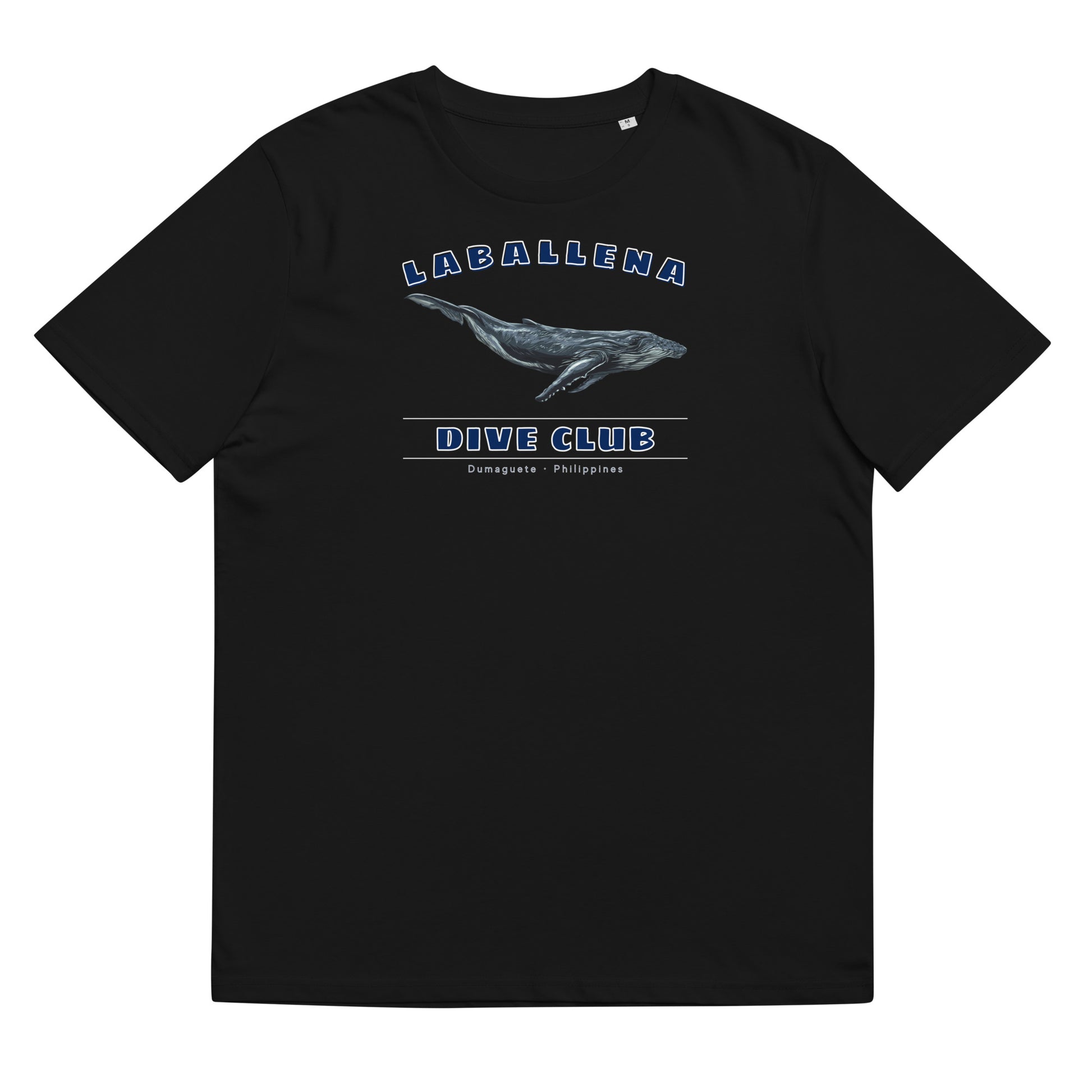The pilot whale or long-finned pilot whale (Globicephala) is a toothed cetacean belonging to the dolphin family, the second-largest member of its family in size after the orca. The pilot whale has a rounded head with a small, slightly upturned beak and an upward-curved mouth that resembles a smile. In males, their rounded forehead can protrude up to 7 centimeters above the lower jaw.
Its body is long and robust, narrowing along the caudal peduncle. There are two species, the common pilot whale (Globicephala melas) or long-finned pilot whale and the short-finned pilot whale (Globicephala macrorhynchus), whose main differences are the size and coloration of their fins and their area of residence.

T-shirts for Whale Lovers
SEE MORE WHALE T-SHIRTSThe skin color of this dolphin is black with variations towards charcoal gray, being white or light gray in the form of an anchor on its ventral side. The short-finned pilot whale has a faint gray spot behind the dorsal fin, resembling a "saddle." Its prominent dorsal fin is strongly curved, and its fins are sickle-shaped.
Males are much larger than females, reaching a length of up to 6 meters and a weight of up to 3 tons. Adult females measure up to 5 meters and weigh half as much as males.
 Pilot whale in Tarifa. Image by Odyssea
Pilot whale in Tarifa. Image by OdysseaThe pilot whale primarily feeds on squid but also includes octopuses, cuttlefish, herring, and other small fish in its diet. It has between 40 and 48 teeth, few compared to the 120 that many other dolphin species have. This may indicate an evolutionary trend toward a lower number of teeth in those that feed primarily on squid, as their teeth are only used for capturing and holding prey. An adult pilot whale can eat up to 14 kilograms of squid per day and is capable of hunting in groups, coordinating to concentrate their prey and simplify the hunt. The powerful and sharp whistles emitted by the pilot whales appear to be involved in coordinating this activity.
Males reach sexual maturity at 4.6 meters and 12 years of age, later than females, which reach maturity between 6 and 7 years of age. Gestation lasts approximately 12 to 15 months, and the birth produces calves of 1.8 meters weighing around 100 kilograms. Calves, born mainly in summer, feed on maternal milk until they are 22 months old. Males often compete for females with violent fights involving bites and charges. Mating also includes these activities, and some females, like reef sharks, bear scars from bites inflicted by males during the breeding season.
Preview of the documentary "Isora, history of a pod of pilot whales" by Rafa Herrero
In general, pilot whales are found in both the northern and southern hemispheres, in tropical and temperate waters worldwide. Short-finned pilot whales tend to be found in warmer waters, while cold and temperate waters are preferred by the long-finned variety. There is some overlap between the two species, but they remain separate in most areas. In Spain, pilot whales can be found in the Canary Islands, where they frequent regularly.
Pilot whales are highly social and are most often found in groups of 20 to 90 individuals. Within these groups, there are stable associations between females and their calves. There are usually some males in these groups, but genetic evidence has shown that they are not the parents of the group's calves. Several calves in the same group may be sired by the same male, indicating that a male can enter a group for a brief period and mate with more than one female.
Due to their social nature, pilot whales often experience mass strandings. Although the reasons for these strandings are not known, they are believed to be related to the persistence of keeping the group together. Errors in navigation when seeking prey, irregularities in the magnetic field, or possible parasitic infections leading to neurological disorders may drive the group to the coast, resulting in death as they cannot return to open sea.
The numbers of the two pilot whale species are unknown, and although some areas have been depleted by mass fishing, pilot whales are not considered endangered. Nearly a million long-finned pilot whales and at least 200,000 short-finned pilot whales are likely to reside in the oceans and seas worldwide. Humans have exploited the social nature of pilot whales to drive them into numerous groups on the beach, where they are massacred.
 Mass killing of pilot whales in the Faroe Islands. Image from http://www.seren.bangor.ac.uk
Mass killing of pilot whales in the Faroe Islands. Image from http://www.seren.bangor.ac.ukCape Cod and Newfoundland in the U.S., the Faroe Islands in Denmark, the Shetland and Orkney Islands in the U.K., Iceland, and Norway have the dubious honor of practicing this method, filling bays with blood and pilot whale corpses for meat commercialization and using their bones for fertilizer production.
The most well-known case is that of the Faroe Islands, where an average of 627 pilot whales are killed each year, sometimes exceeding 1,100 killings in just one month. The hunt, called Grindadráp, is carried out by the entire community, and anyone can participate. Hunters surround the whales in a semicircle and, aided by boats, trap them with ropes to cut their main arteries with a hook, staining the sea with blood.
Although surviving well in captivity, another threat to pilot whales is their use in many aquariums and zoos, where they are easily trained demonstrating intelligence similar to that of the bottlenose dolphin.























